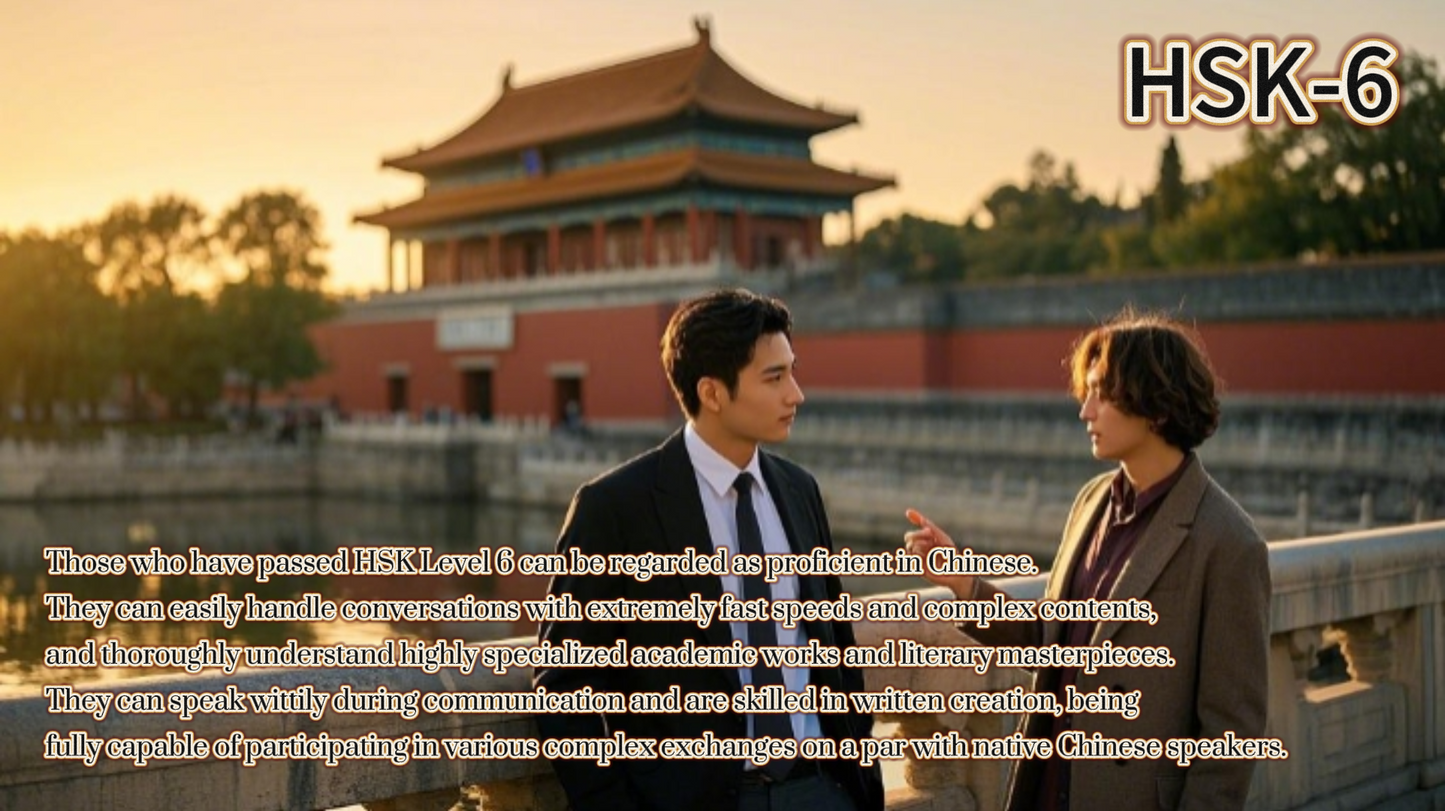Chinese language and culture
HSK-6
HSK-6
Couldn't load pickup availability
HSK Level 6 is the sixth level of the Chinese Proficiency Test
Content and Format
· Listening: It takes about 40 minutes and there are a total of 50 questions. The question types include multiple-choice questions, fill-in-the-blank questions, etc. The listening materials come from a wide range of sources, including academic lectures, news commentaries, recitations of literary works, etc., involving various professional fields and complex language phenomena. The speaking speed is fast, and the language expressions are rich and diverse.
· Reading: It takes approximately 60 minutes, with 50 questions in total. There are various question types such as multiple-choice questions, matching questions, sequencing questions, etc. The reading materials cover all kinds of academic documents, literary classics, newspaper editorials, etc. The articles are long in length and high in difficulty, requiring candidates to have strong reading comprehension abilities, analytical skills, and the ability to summarize and conclude.
· Writing: It takes about 45 minutes, with 1 question in total. Candidates are required to write an argumentative or expository essay of no less than 800 Chinese characters in Chinese according to the given topics and relevant materials. This mainly examines candidates' logical thinking, argumentation ability, as well as the application ability of advanced Chinese vocabulary and sentence patterns.
Vocabulary Requirements
Students need to master about 5,000 commonly used Chinese characters and more than 10,000 commonly used words, including a large number of ancient Chinese words, rare characters, professional terms, as well as various fixed collocations and idiomatic expressions.
Ability Requirements
Students who have passed the HSK Level 6 have a Chinese proficiency close to or reaching that of native Chinese speakers. In terms of listening, they can easily understand Chinese conversations in various situations, including rapid oral expressions, complex professional content, and words with dialectal accents, etc. In terms of reading, they can read all kinds of Chinese materials without barriers, understand the deep meanings and implicit information in them, and can analyze and evaluate different viewpoints. In terms of writing, they can write articles with a rigorous structure, sufficient argumentation, beautiful language, and accurate word usage, and are proficient in using various rhetorical devices and logical relationships to express complex thoughts. In terms of oral expression, they can fluently and accurately give long speeches or engage in debates, clearly expound their own viewpoints and opinions, and can flexibly use various language techniques to enhance the expression effect.
Share


